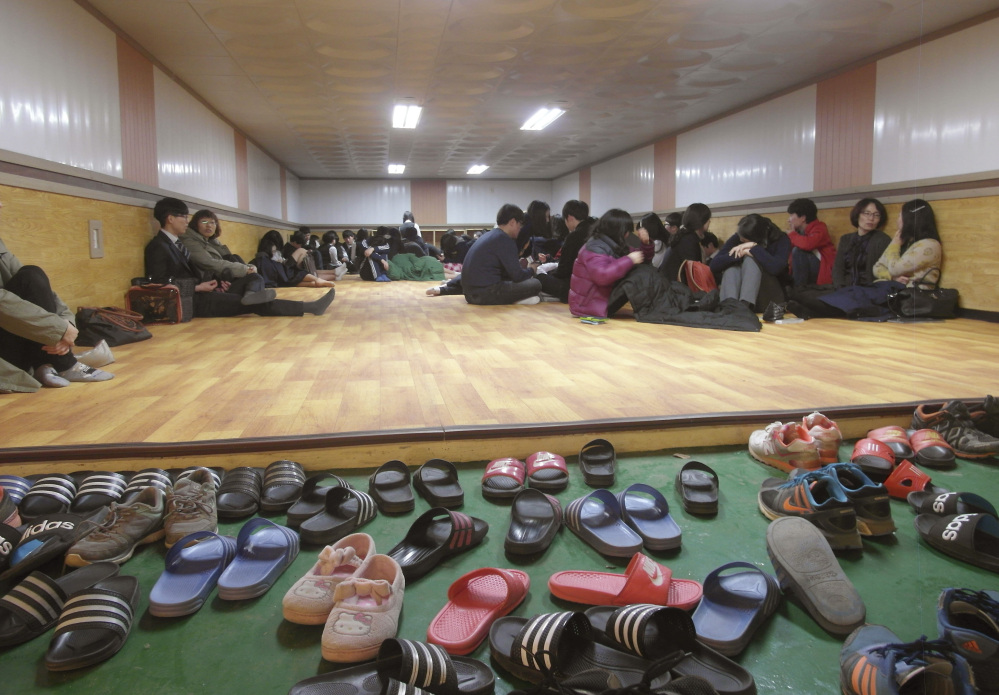SEOUL, South Korea — North and South Korea fired artillery shells into each other’s waters Monday, a flare-up of animosity between the rivals that forced residents of five front-line South Korean islands to evacuate to shelters, South Korean officials said.
The South Korean artillery fire came after shells from a North Korean live-fire drill fell south of the Koreas’ disputed western sea boundary, an official with South Korea’s Joint Chiefs of Staff said. No shells from either side were fired at any land or military installations, said the official, who provided no other details and spoke on condition of anonymity because of office rules.
The exchange of fire followed Pyongyang’s earlier, unusual announcement that it would conduct live-fire drills in seven areas north of the poorly marked Yellow Sea boundary between the countries. North Korea routinely test-fires artillery and missiles into the ocean, but it’s rare for the country to disclose training plans in advance. The announcement was seen as an expression of Pyongyang’s frustration at making little progress in its recent push to win outside aid.
Monday’s incident appeared to be relatively mild in the long history of animosity and violence between the Koreas, but there is worry in Seoul that increasing North Korean dissatisfaction could prompt a repeat of the weeks-long barrage of near-daily war rhetoric last spring that saw tensions soar as Pyongyang threatened nuclear strikes on Washington and Seoul following international condemnation of its third nuclear test.
In addition to sending residents of five front-line South Korean islands to shelters, Lee Han-seok, an official with Ongjin county, which governs the islands, also said that ferry service linking the islands to the mainland was stopped.
Kang Myeong-sung, speaking from a shelter on Yeonpyeong island, which is in sight of North Korean territory, said he hadn’t seen any fighter jets but heard the boom of artillery fire. In 2010, North Korean artillery killed four South Koreans on Yeonpyeong. Pyongyang said it was responding to earlier South Korean drills in disputed waters.
The North in recent weeks has increased threatening rhetoric and conducted a series of rocket and ballistic missile launches that are considered acts of protest against annual ongoing springtime military exercises by Seoul and Washington. The North calls the South Korea-U.S. drills a rehearsal for invasion; the allies say they’re routine and defensive.
The western sea boundary has been the scene of several bloody naval skirmishes between the Koreas in recent years, including the 2010 artillery attack on Yeonpyeong by the North.
“The boneheads appear to have completely forgotten the fact that Yeonpyeong island was smashed by our military’s bolt of lightning a few years ago,” a North Korean military official, Yun Jong Bum, said Monday, according to Pyongyang’s main Rodong Sinmun newspaper.
Pyongyang also threatened Sunday to conduct a fourth nuclear test at some point, though Seoul says there are no signs of an imminent detonation. Wee Yong-sub, a deputy spokesman at the South Korean Defense Ministry, said the North Korean warning about the live-fire drills Monday was a “hostile” attempt to heighten tension on the Korean Peninsula.
The North has gradually dialed down its threats since last year’s tirade and has sought improved ties with South Korea in what foreign analysts say is an attempt to lure international investment and aid. There has been no major breakthrough in the North’s reported push to win outside aid, however, with Washington and Seoul calling on the North to first take disarmament steps to prove its sincerity about improving ties, analysts say.
Recent threats are an expression of anger and frustration over what the North sees as little improvement in progress in its ties with South Korea and the U.S., said Lim Eul Chul, a North Korea expert at South Korea’s Kyungnam University. Lim said the North might conduct a fourth nuclear test and launch other provocations to try to wrest the outside concessions it wants.
The Korean Peninsula remains in a technical state of war because the 1950-53 Korean War ended with an armistice, not a peace treaty. About 28,500 American troops are deployed in South Korea to deter potential aggression from North Korea.
Send questions/comments to the editors.



Comments are no longer available on this story